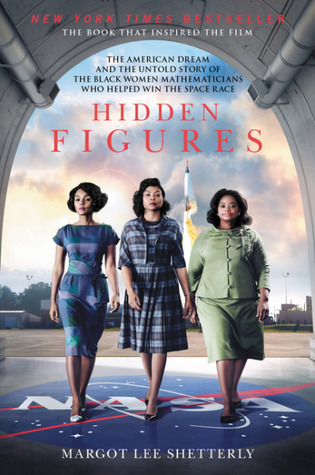Hidden Figures:
The American Dream and the Untold Story of the Black Women Mathematicians Who Helped Win the Space Race
by Margot Lee Shetterly
“Before John Glenn orbited the earth, or Neil Armstrong walked on the moon, a group of dedicated female mathematicians know as “human computers” used pencils, slide rules, and adding machines to calculate the numbers that wo
uld launch rockets, and astronauts, into space.
Among these problem-solvers were a group of exceptionally talented African American women. Originally math teachers in the South’s segregated public schools, these gifted professionals answered Uncle Sam’s call during the labor shortages of World War II. With new jobs at the fascinating, high-energy world of the Langley Memorial Aeronautical Laboratory in Hampton, Virginia, they finally had a shot at jobs that would push their skills to the limits.”
Hidden Figures is my transition book from Black History Month to Women’s History Month. It showcases a quartet of significant–but little known–African American women mathematicians. I saw the movie and knew I wanted to read the book. It was obvious that the movie took a lot of “artistic license,” but the underlying story of black women mathematicians at NASA was so compelling, I had to find out the “real” vs. the “reel” of the movie.
Shetterly did not disappoint.
From the blurb:
“Starting in World War II and moving through to the Cold War, the Civil Rights Movement and the Space Race, Hidden Figures follows the interwoven accounts of Dorothy Vaughan, Mary Jackson, Katherine Johnson, and Christine Darden – four African American women who participated in some of NASA’s greatest successes. It chronicles their careers over nearly three decades as they faced challenges, forged alliances, and used their intellect to change their own lives, and their country’s future.
Even as Virginia’s Jim Crow laws required them to be segregated from their white counterparts, the women of Langley’s all-black “West Computing” group helped America achieve one of the things it desired most: a decisive victory over the Soviet Union in the Cold War, and complete domination of the heavens.”
The stories of the women featured in the movie are also the backbone of this book. Shetterly writes clearly and with authority, deftly weaving the women’s stories with the history of the times and place. She clearly did her homework. Along the way we also learn a good deal about aeronautics, science, and math.
The book also covers the white women “computers” and the first black engineers. Shetterly shows us the gradual evolution of an integrated science facility set in the midst of the Jim Crow state of Virginia. I particularly enjoyed the insight into the culture of middle-class black families and educational institutions. Set against the major developments of the times–the Great Depression, WWII, the Civil Rights Movement, and the Space Race–we get a picture of people striving and succeeding against enormous odds.
These women are heroes and inspiring examples for girls of all races. The movie only covers a fraction of their stories, so read the book!
Note:
President Obama honored Katherine G. Johnson with the Presidential Medal of Freedom (the highest award given to civilians) in November 2015 when she was 97. Two years later in 2017, NASA honored her exceptional service with the dedication of “The Katherine G. Johnson Computational Research Center.” Below is an interview with Ms. Johnson about the dedication.
